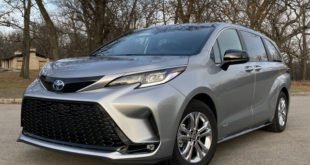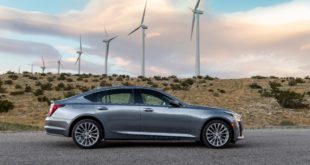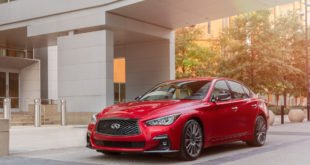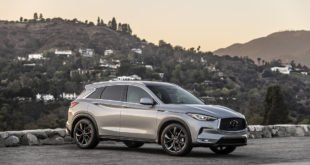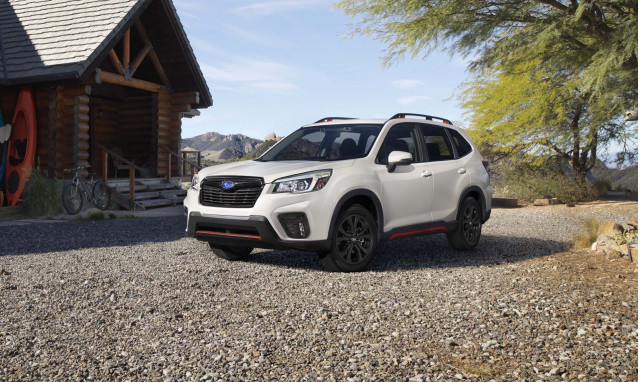
2020 Subaru Forester
Just like every culture has a distinct take on a stuffed dough ball—empanada, pierogi, panzarotti—every automaker has a distinct take on a compact crossover. The 2020 Subaru Forester is the steamed bun of this analogy, and the 2020 Volkswagen Tiguan is the lesser known bierocks.
Both are distinct, both are boxy, both have good standard features, but the Forester stands out a bit more. On our menu, it earns a TCC Rating of 6.8 compared to the Tiguan’s 6.0. This score partly reflects the relative freshness of the Forester, which was overhauled for 2019 and won our Best Car To Buy 2019 award. A refreshed Tiguan is planned for 2021, yet it’s not without its charms, which we outline in detail below.
MORE: Read our 2020 Volkswagen Tiguan and 2020 Subaru Forester full reviews

2020 Subaru Forester
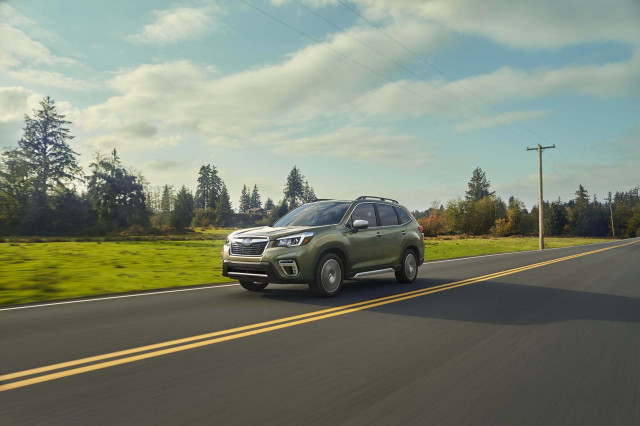
2020 Subaru Forester

2020 Volkswagen Tiguan
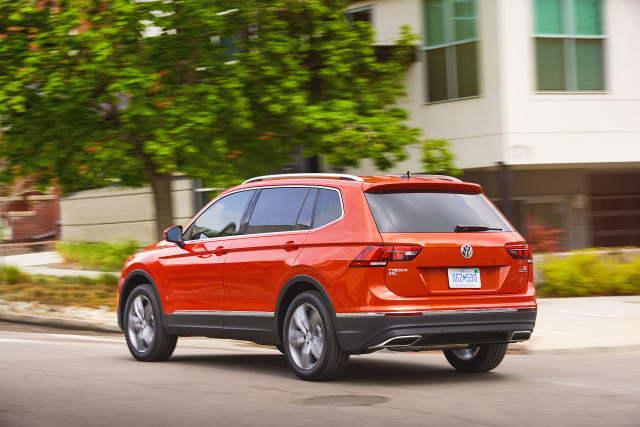
2020 Volkswagen Tiguan
Both compact crossovers don 17-inch wheels and a conservative two-box shape. Both wear lower body cladding that suggests some off-road ability, but the Forester does it better with nearly an inch more of ground clearance and standard all-wheel drive. While the Forester is a couple inches taller, the Tiguan is longer and wider and is roomy enough to fit a third row that can haul grade-schoolers around town in a pinch.
The Forester has a steeper windshield that offers excellent outward vision. The Tiguan’s conservative exterior carries over inside with a clean cabin design that isn’t as busy as the two-screen approach of the Forester. The Forester’s dash is topped with a hooded screen for vehicle info and active safety features. Functionally, it helps to compartmentalize all the possible info, but we prefer the look and feel of the Tiguan that has aged well inside.
Both start around $ 26,000, but the Tiguan’s optional all-wheel drive adds another $ 1,300. Since the Forester comes with all-wheel drive and better basic features, it’s the better deal. But the Tiguan has more grunt and is sportier than the Forester. It uses a 184-horsepower 2.0-liter turbo-4 with an 8-speed automatic transmission making 221 pound-feet of torque. Drive modes can enhance the steering feel or delay the shift points for added fun, and even though the 8-speed can dawdle under heavy throttle on passing moves, it’s more responsive and has more snarl than the Forester. Its slightly lower ride height also adds a bit more handling prowess.
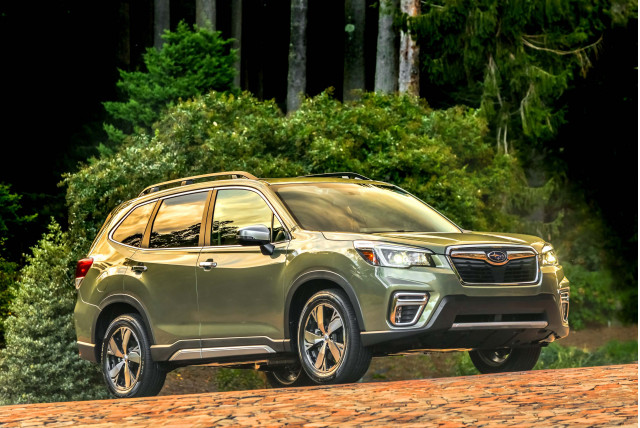
2019 Subaru Forester
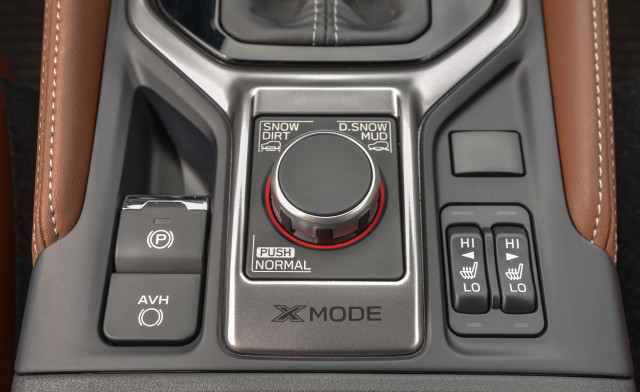
2019 Subaru Forester
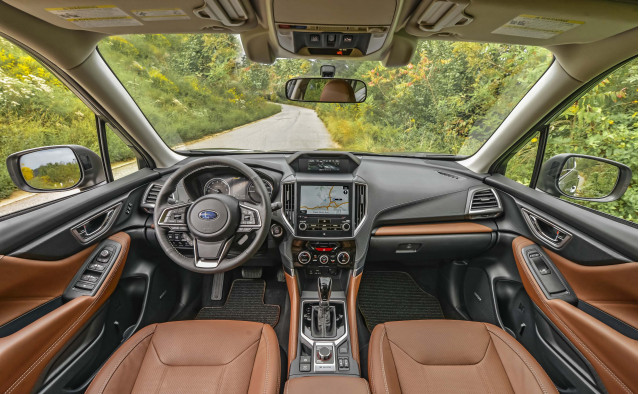
2019 Subaru Forester
The Forester uses a more workmanlike 182-hp 2.5-liter flat-4 engine powered by a continuously variable automatic transmission (CVT) making 176 lb-ft of torque. The flat-4 can be noisy, but the CVT is one of the better ones in that it is hardly noticeable as it finds the best “gear” for the driver’s inputs. This may not equate to fun, but even with all-wheel drive, the Forester is way more efficient than the Tiguan, which is probably more important. The EPA rates it at 26 mpg city, 33 highway, 29 combined, whereas the all-wheel drive Tiguan rates 20/27/23 mpg. Even with front-wheel drive, the heavier, larger Tiguan only gets 25 mpg combined.
Both compact crossovers offer spacious cabins with comfy front seats and roomy enough back seats to fit five passengers. The available third row in the Tiguan, which costs $ 595 with all-wheel-drive models, is functional in a pinch. A family of five would want to size up from either vehicle and consider the VW Atlas or Subaru Ascent for more room, however.
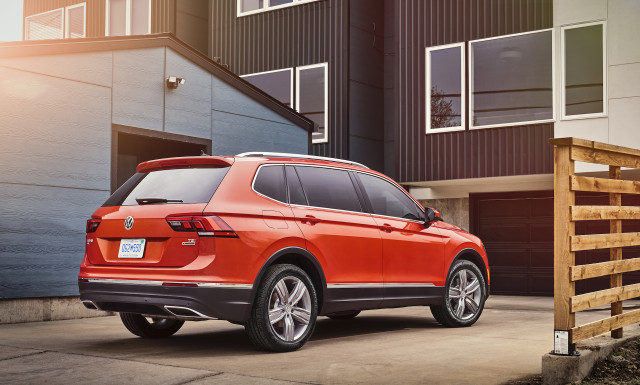
2020 Volkswagen Tiguan
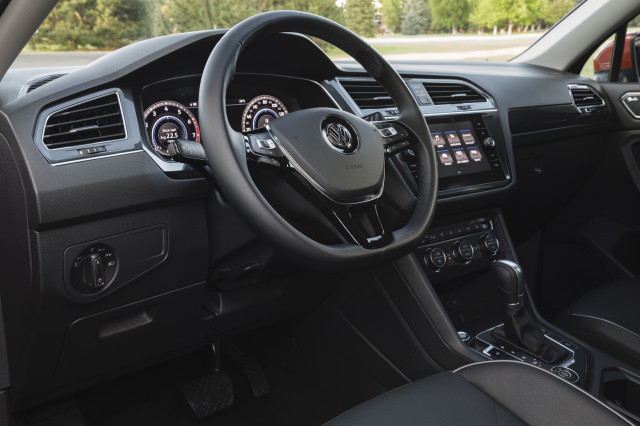
2020 Volkswagen Tiguan
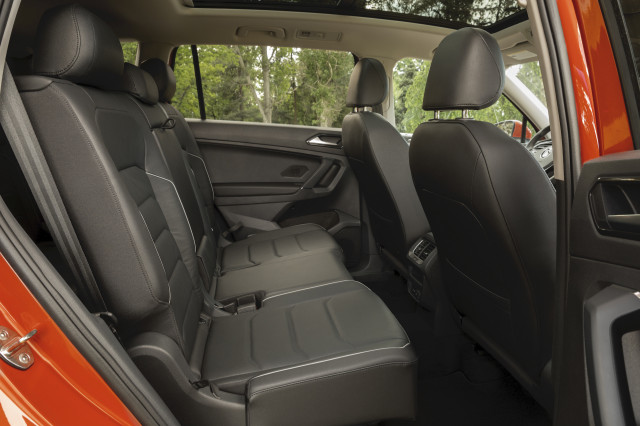
2020 Volkswagen Tiguan
Both models come well-equipped with standard active safety features including automatic emergency braking with pedestrian detection. Since the Forester is newer it comes with more safety tech, including active lane control and adaptive cruise control. It earned top scores in crash testing from both the NHTSA and the IIHS, which gave it a Top Safety Pick+ award. The Tiguan, which comes with blind-spot monitors and rear cross-traffic alerts, earned a Top Safety Pick award, but hasn’t been tested by the NHTSA.
Standard equipment on the base models includes split-folding rear seats, a 6.5-inch touchscreen, cloth seats, Bluetooth connectivity, at least one USB port, and Apple CarPlay and Android Auto compatibility, which are better than the native infotainment systems of either. While the Forester Touring model tops $ 35,000 and the Tiguan SEL Premium balloons to $ 40,000, we prefer the base model Tiguan S ($ 27,265 with all-wheel drive) and the Forester Premium ($ 28,405) as the sweet spot of features and value. Premium adds heated front seats, power-adjustable driver’s seat, leather-wrapped steering wheel, and a panoramic moonroof to the Forester.
All things considered, the 2020 Subaru Forester dough ball does it better than the 2020 Volkswagen Tiguan, as our TCC Rating indicates. The Tiguan is more fun to drive and the available third row offers some interior flexibility, but the Forester excels at what is more important to most consumers with better features, safety scores, and fuel economy.
